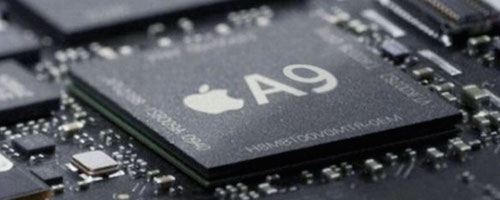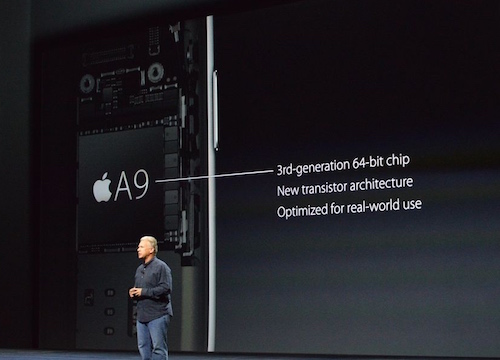The A9 Chip Found in the iPhone 6s Is Really, Really Fast

Toggle Dark Mode
With the introduction of the iPad in March, 2010, Apple unveiled their very own, home-brewed mobile application processor — the A4 chip, which, at the time, was humming along at a smooth and steady 1 GHz.
Featured Photo: Macworld
Fast forward to 2015, and we’ve recently been graced with the release of Apple’s 6th generation, A9 mobile processor, which also happens to be the 3rd generation of silicon built on the ARM-v8 based, 64-bit architecture — making it capable of processing tasks much akin to many of the desktop computing solutions on the market today.
Featured in the latest iPhone 6s and 6s Plus, the A9 chip boasts an impressive 1.85 GHz of dual-core application processing power, supplemented by a 6-core graphics coprocessor, the all new PowerVR GT7600. While Apple’s newest chipset may only be a dual-core unit, in theory, it’s important to realize that most applications — aside from some demanding games and video/photo editing apps — only rely on one core when drawing upon a devices’ raw power.
In addition, Apple’s newest iPhone line features the inclusion of 2GB of DDR3 memory — effectively doubling the amount of its predecessor — which facilitates in the processing and management of applications, as well.
So it’s no doubt that Apple’s 3rd generation, 64-bit chip has some expectations to meet in terms of day-to-day performance. But how well does it actually fare, especially in relation to some of the rather beastly chips now out on the market, including offerings from Qualcomm and Samsung — the eight-core Snapdragon 810, and Exynos 7420 series, respectively.
What Apple Has To Say:
According to Apple, the new A9 chip boasts performance upgrades of up to 70% over the previous A8, 2nd generation chip, while graphics performance is touted as being up to 90% faster. I suppose, however, the most important question is, “how does the chip perform in a real world setting?”
AppleInsider actually pegged the two units, side by side, in an effort to discern exactly what the answer to that question is. And, needless to say, the results were rather impressive.
In terms of multi-core performance, as determined by the latest GeekBench v3.3.2, the iPhone 6s Plus’ score reached 4423, over its predecessors’ score of 2876 (the higher the score, the better.)
ingle-core performance between the two was even more impressive, at 2527 (6s) and 1605 (6), respectively.
In terms of raw, single-core performance, this makes the new iPhone 6s’ A9 chip load applications and perform tasks about 60-70% faster than its predecessor. In addition, the new A9 chip boasts a 90% performance boost over the latest and greatest chip from Samsung, the Exynos 7422, which is featured in the Galaxy Note 5 and the Galaxy S6 line. When compared to Qualcomm’s most recent 810 chip, the iPhone 6s Plus rendered applications and loaded web pages up to 133% faster.










